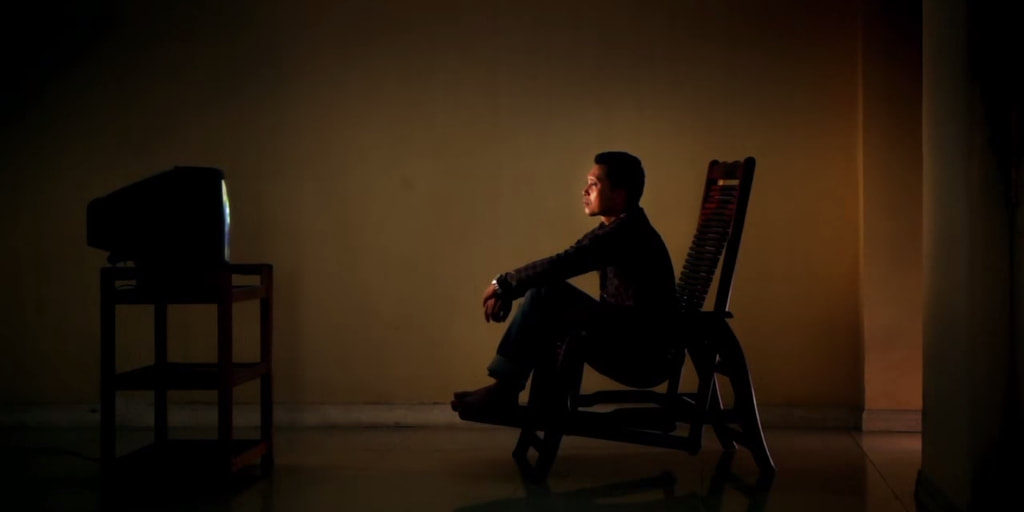What Act of Killing shares with Look of Silence is a disturbing frankness about the massacres. The killers talk about not just the workmanlike drudgery of killing thousands of people, but the brutal diversions they engaged in to spice things up or ward off insanity. What makes Look of Silence distinct is the added element of the killers’ families, who were mostly absent from the earlier film. For some of their adult children, they’ve never heard these details, and Oppenheimer watches their faces in the exact moment that they recalibrate their relationship with their father or their uncle. It’s one thing for the state to valorize murderers: every state does essentially that in one way or another and makes excuses for them in textbooks and national mythmaking, a process that Adi’s son encounters in school. It’s something else when a family is directly confronted with what their patriarch is capable of. It becomes a lot harder to put one’s infant child in the lap of a man who nonchalantly describes what the other side of a dismembered breast looks like.
For the viewer, dwelling in all this recrimination and pain makes for a tough sit, or it would if not for the resilient charm of the film’s subjects. Adi’s father is 103, blind, and barely mobile, but his comic timing is still sharp. His son asks him to sing a song, and of all the songs the father could’ve sung, he immediately belts one out about how sexy he is, while Adi’s mother rolls her eyes in the background. Adi’s young daughter inherited her grandfather’s talent for comedy, imitating her dad and displaying a mastery of fart humor. These moments of a family entertaining each other are a must. They don’t fully alleviate the sick feeling that permeates the film and perhaps the subjects’ own lives, but there’s rarely been a film in more need of a brief respite from all the real-life horror.
The Look of Silence’s grand utility as a historical document is in how it ticks all the boxes of delusional, counter-factual storytelling to cover up nakedly evil crimes on a national scale. The psychological and rhetorical tricks the killers use to elevate their deeds and convince their fellows of how those deeds were necessary must be known by as many people as possible, thus serving as an inoculation against their future recurrence. An endlessly galling part of living through the last five years of American history is to see all the signs and the tricks, and watch them work on rabid, cheering throngs. An initial viewing of Act of Killing had a more naïve version of myself wondering what was wrong with Indonesia that they could act this way, but a more savvy current version recognizes this insanity in every Confederate flag, to say nothing of the US’s own well-established manipulation and direction of the Indonesian massacres themselves. That country is no more fucked up than any other, and the unfucking will happen thanks to heroes like Adi who eschew revenge in exchange for truth and understanding. Of course, he now travels with a security team while his brother’s murderers strut around without a care in the world, perpetuating injustice every time they wake up in the morning. The scale of all of it, alongside the intimacy of both the killers and the victims, brought to grim light by Oppenheimer and his team of Anonymous filmmakers, is one of the greatest documentary accomplishments of all time. A

 RSS Feed
RSS Feed